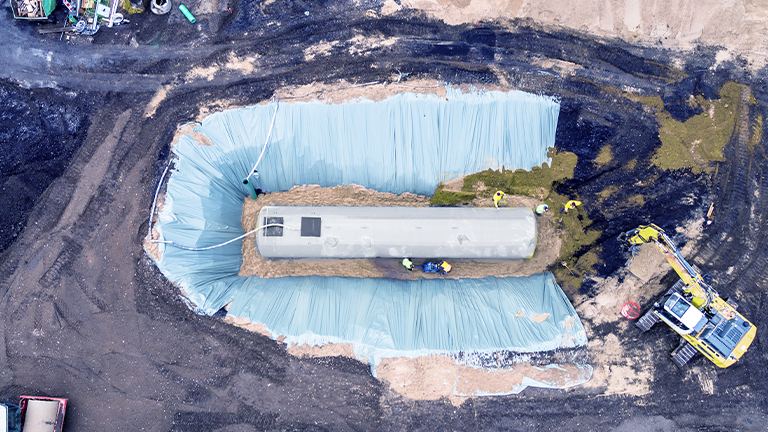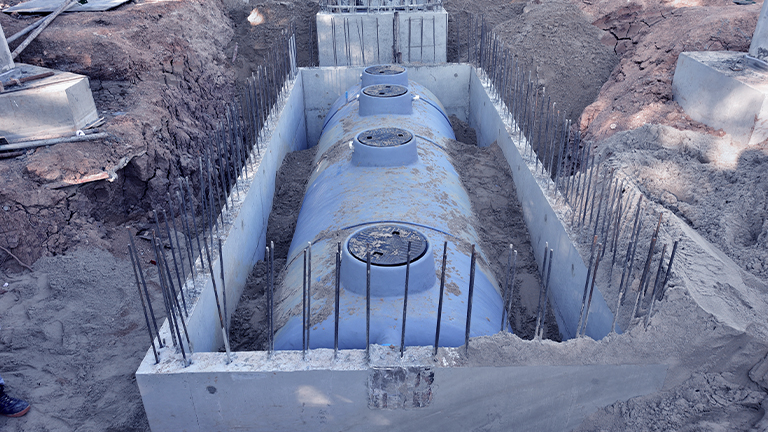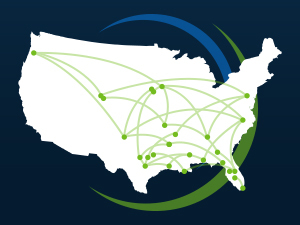Underground Storage Tanks (UST): The Importance of Compliance
The EPA defines a UST as “a tank and any underground piping connected to the tank that has at least 10 percent of its combined volume underground.”
These types of structures are often used by gas stations, automotive repair facilities, and large-scale industrial or commercial facilities (especially those with emergency backup generators) to store petroleum and petroleum products such as gasoline, diesel, and kerosene.
In addition to the storage and function of USTs, the underground concept is focused on safety, security, and space. Burying the structures that hold fuel and other potentially dangerous materials saves space and reduces the likelihood of vehicle or personnel-related accidents.
However, the processes that impact the safety and efficacy of USTs are quite complex, and the consequences of not doing things the right way can be severe. Failure to comply with regulations or choosing not to follow safety best practices can put entire communities at risk.
THE IMPORTANCE OF UST COMPLIANCE
USTs that are used to store petroleum or certain hazardous substances are subject to regulations from the EPA and other government agencies because of their potential ability to contaminate surrounding soil and groundwater.
Leaks or spills (which are also called “releases”) from USTs can be devastating to humans, businesses, and environments, especially if they’re not addressed properly.
Unfortunately, these types of occurrences are not all that rare. Over the past 34 years, the EPA’s national UST program has cleaned up roughly 506,000 UST petroleum releases as of March 2022.
The most common UST leaks and spills are caused by faulty installation, operation, and maintenance practices which can be prevented by simply adhering to regulatory compliance measures.
REGULATIONS & BEST PRACTICES ARE CONSTANTLY EVOLVING
Oil & gas companies as well as federal, state, and local regulatory bodies have been working together throughout the decades to create safer UST solutions.
Quite a few industry policies and practices have changed as a result of this progress.
Until the mid-1980s, most USTs were a single-wall construction, meaning they had no secondary leak containment systems to prevent soil and groundwater contamination. To make matters worse, most of these tanks were also constructed using bare steel which was very susceptible to corrosion—a prominent UST release catalyst.

In 1998, federal regulations shifted, making double-wall construction mandatory for all USTs. Plenty of other regulations have evolved since then as well, due to technological innovations within the industry and more intentional efforts by public and private entities to protect the environment.
Prominent developments include improved leak detection and enforcement provisions, increased EPA funding for cleanup operations, and better inspection practices.
For example, today under federal regulations, double-walled systems require compliance inspections by the owner or a third party (like EIS) every 30 days. These compliance inspections cover all the important variables of UST sites—piping pressures, automatic tank gauging systems with operability tests, compliance wells, and cathodic protection, to name a few.
All of these regulatory and procedural improvements have greatly reduced UST releases across the U.S. However, to this day there are still sites needing remediation due to things like operator error, natural disasters, or outdated equipment such as single-walled tanks failing.
Sites like these often sit for years, even decades before they’re properly addressed.
That’s why it’s crucial for all parties who work with USTs to stay on top of compliance, from the businesses that operate them to the contractors like EIS who perform assessments and coordinate cleanup efforts when something goes wrong.
EIS PROVIDES COMPLIANT, SAFE, AND TURNKEY UST SOLUTIONS

The EIS family of companies has decades of experience working on UST fuel systems, with a very high success rate for obtaining “no further action required” statuses from state regulators due to our proactive approach to compliance.
We offer efficient, cost-effective turnkey UST solutions, handling everything from site assessments and sampling/reporting to soil excavation and remediation.
Our licensing and expertise have allowed us to safely complete hundreds of UST removals/closures for retail gas stations, state and county governments, manufacturers, real estate companies, and the owners and operators of commercial and industrial sites.
Take the work of Eagle Environmental Consulting, Inc, the newest member of the EIS family, for example.
Eagle Environmental has been a UST contractor for the State of Colorado since 2006, with a reputation for swift precision and uncompromising compliance across all their projects.
In 2019, they were approached by the State Lead program to perform a site assessment for a former retail gasoline station in Cortez, Colorado. A UST petroleum release had been discovered there in 1994, but up until this point, no remediation work had been carried out.
After sampling the surrounding soil and groundwater for waste characterization and delineation, Eagle Environmental developed a remedial plan for excavation and onsite treatment of petroleum hydrocarbon-contaminated soil and dewatering of petroleum hydrocarbon-contaminated groundwater.
They then got to work, completing the remediation portion of the project which included onsite soil mixing and hydrogen peroxide treatment.
In addition to their in-house assessment and remediation capabilities, Eagle Environmental’s strong network of vetted vendor partners—including the excavation subcontractor, manufacturer and transporter of the hydrogen peroxide, and groundwater treatment subcontractor—provided the client with a turnkey solution.

Eagle Environmental handled every part of the UST cleanup process quickly and safely, from start to finish. This created a cost savings for the client and provided them with a streamlined, straightforward experience working with one contractor.
LEARN MORE ABOUT THE EIS FAMILY
EIS is a leading provider of mission-critical environmental and infrastructure services in the United States, serving a wide variety of public and private end markets. We offer a full suite of compliant and turnkey abatement, remediation, and demolition solutions that protect the health and prosperity of communities throughout the U.S.
Our trusted family of companies includes:
- Earth Services & Abatement
- 1 Priority Environmental Services
- Snyder Environmental
- Potomac Abatement
- Simpson Environmental Services
- Iowa Demolition
- AET Group
- Eagle Environmental Consulting
To read the stories of our clients and learn what makes the EIS family such an ideal partner, explore our case studies.


